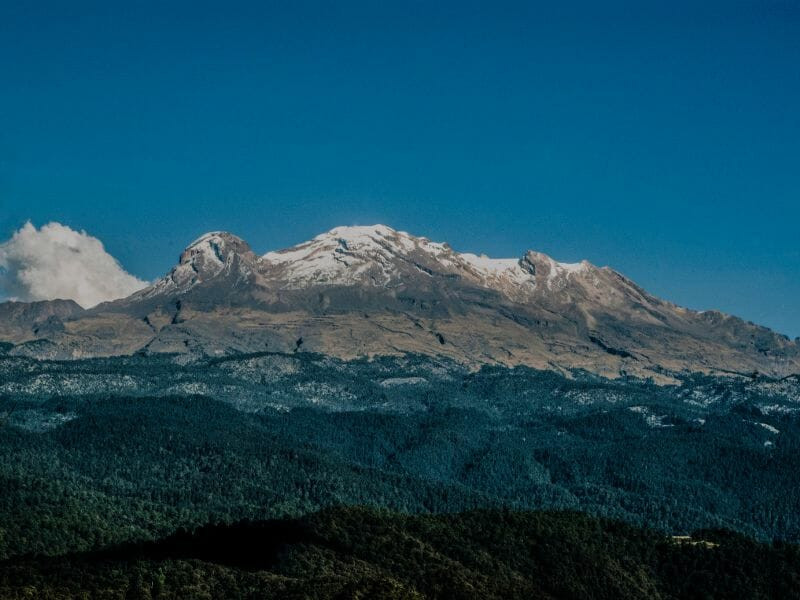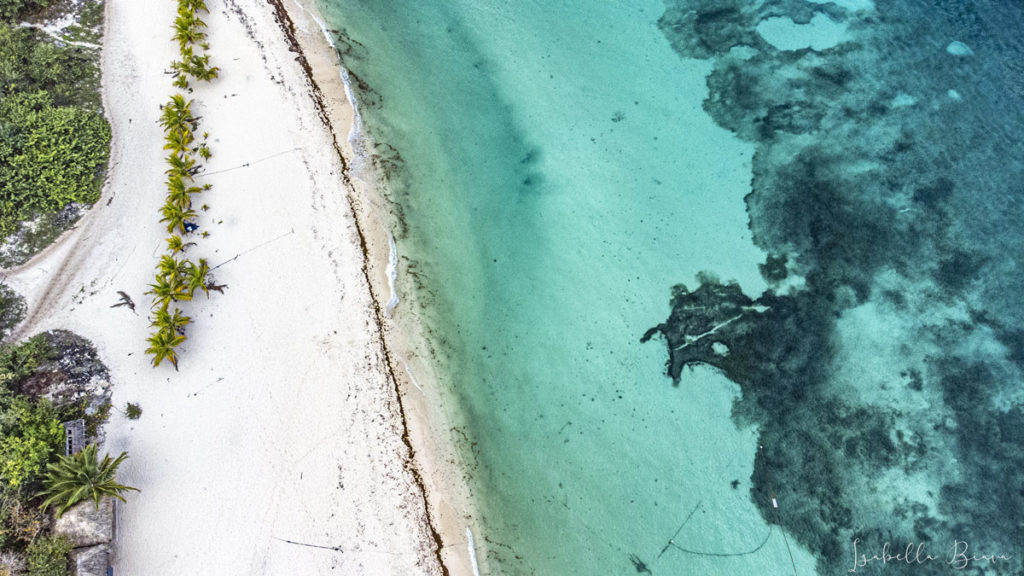Does Mexico City Get Snow? The answer is rarely, but the possibility exists. For LGBTQ+ travelers planning a trip to Mexico, understanding the climate and potential for snowfall in Mexico City is crucial for packing and planning. Gaymexico.net offers valuable insights into Mexico’s diverse climate and LGBTQ+ friendly destinations, ensuring a safe and enjoyable trip. Learn about alternative snow destinations, LGBTQ+ travel tips, and winter activities to make your trip memorable.
1. Understanding Snowfall in Mexico
Does it snow in Mexico? The answer is more nuanced than a simple yes or no. While Mexico is often associated with warm, tropical weather, certain regions, particularly those at high altitudes in the northern part of the country, experience snowfall during the winter months. This makes Mexico a unique destination where you can experience both tropical beaches and snowy landscapes.
1.1. Factors Influencing Snowfall
Several factors contribute to snowfall in Mexico:
- Altitude: Higher altitudes experience cooler temperatures, increasing the likelihood of snow.
- Latitude: Northern regions of Mexico are closer to the poles and thus experience colder winters.
- Winter Season: The months of December to February are generally the coldest, increasing the chance of snowfall.
1.2. Common Misconceptions
Many believe that Mexico is perpetually hot, which isn’t true. While coastal areas remain warm, inland and mountainous regions can experience significant temperature drops. Understanding these climatic variations is important for LGBTQ+ travelers planning diverse activities.
2. Does Mexico City Get Snow?
Mexico City, situated at a high altitude of over 7,000 feet, has seen snow, but it’s a rare occurrence. The last significant snowfall in Mexico City was on January 12, 1967, with another event before that on March 5, 1940. The rarity of snow makes it a notable event when it happens.
2.1. Historical Snowfall Events
The 1967 and 1940 snowfalls are historical anomalies. Residents remember these events vividly, sharing stories and photos that capture the city transformed by snow.
2.2. Current Climate Trends
Climate change could alter weather patterns, but as of now, snow in Mexico City remains uncommon. Current trends suggest that while temperatures can drop significantly, conditions rarely align for snowfall.
3. Places Where You Are More Likely to See Snow in Mexico
While Mexico City rarely sees snow, several other locations in Mexico offer a higher chance of experiencing a winter wonderland. These spots are ideal for LGBTQ+ travelers seeking a snowy escape.
3.1. Northern Regions
The northern states of Mexico are your best bet for seeing snow. States like Chihuahua and Durango, with their mountainous terrains, frequently experience snowfall.
3.2. Mountainous Areas
High-altitude areas, such as the peaks of volcanoes like Pico de Orizaba and Nevado de Toluca, are reliable places to find snow during winter.
3.3. Specific Locations
- Mexiquillo, Durango: A beautiful forest with waterfalls and stunning landscapes, best visited between December and February.
- Sombrerete, Zacatecas: A UNESCO World Heritage Site with colonial architecture that looks magical under a blanket of snow.
- Arteaga, Coahuila: Known as the “Switzerland of Mexico,” offering skiing and snow tubing opportunities.
- Copper Canyon, Chihuahua: A group of canyons larger than the Grand Canyon, often covered in snow during winter.
- Nevado de Toluca, State of Mexico: An extinct volcano with hiking and mountaineering opportunities.
- Iztaccihuatl: The third tallest mountain in Mexico, popular for mountaineering.
 Iztaccihuatl peak
Iztaccihuatl peak - Pico de Orizaba: The highest mountain in Mexico, famous for extreme adventure activities.
- La Malinche (Malintzin): A peak popular for climbers preparing for higher altitudes.
- Popocatépetl: An active volcano offering day trips and stunning views, though requires caution due to volcanic activity.
4. Planning Your Trip: Factors to Consider
Planning a trip to Mexico involves considering various factors, especially for LGBTQ+ travelers. Gaymexico.net can provide resources to ensure a safe and enjoyable journey.
4.1. Time of Year
The best time to visit snowy regions is between December and February. This period offers the highest chance of snowfall and the coldest temperatures.
4.2. Accommodation and Transportation
In popular snow destinations like Arteaga, you’ll find good hotel options and restaurants. For remote locations like Mexiquillo, plan to bring your own food. Transportation options vary, with buses available to some areas and organized tours recommended for others like Copper Canyon.
4.3. Safety Tips
While Mexico is generally safe for tourists, some areas require more caution. Research your destination, avoid unsafe areas, and take standard safety precautions. Also, be mindful of altitude sickness in high-altitude regions like Nevado de Toluca.
4.4. LGBTQ+ Considerations
Mexico is increasingly LGBTQ+ friendly, but attitudes vary by region. Cities like Mexico City and Puerto Vallarta are known for their vibrant LGBTQ+ scenes. Resources like Gaymexico.net can provide information on LGBTQ+ friendly accommodations, venues, and events.
5. Activities and Attractions in Snowy Regions
Snowy regions in Mexico offer a variety of activities, from skiing to exploring historical sites.
5.1. Skiing and Snow Tubing
Arteaga, Coahuila, known as the “Switzerland of Mexico”, is a prime location for skiing and snow tubing. Its ski centers offer facilities for both beginners and experienced skiers.
5.2. Hiking and Mountaineering
Mountains like Iztaccihuatl and Pico de Orizaba are popular for hiking and mountaineering. Guided tours are available for those looking to explore these peaks safely.
5.3. Cultural and Historical Sites
Sombrerete, Zacatecas, a UNESCO World Heritage Site, offers a unique blend of history and snow. Explore colonial buildings and monuments in a winter setting.
5.4. Natural Wonders
Copper Canyon provides breathtaking views of snow-covered canyons. Enjoy horseback riding, biking, and hiking while taking in the surreal landscape.
6. Essential Packing List for a Winter Trip to Mexico
Packing for a winter trip to Mexico requires balancing warm and cold weather clothing.
6.1. Clothing
- Thermal Layers: Essential for keeping warm in cold regions.
- Waterproof Outerwear: A good raincoat or snow jacket is crucial.
- Warm Socks and Gloves: Protect your extremities from the cold.
6.2. Gear
- Hiking Boots: If you plan on hiking, sturdy boots are a must.
- Crampons and Axes: For climbing after snowfall.
- Altitude Sickness Medication: If visiting high-altitude areas.
6.3. Other Essentials
- Sunscreen: Even in winter, the sun can be strong at high altitudes.
- Sunglasses: To protect your eyes from the glare of the snow.
- Camera: To capture the stunning winter landscapes.
7. Exploring Mexico City in Winter
Even if it doesn’t snow, Mexico City in winter has its own charm. The city is decked out in festive decorations, and there are numerous cultural events to enjoy.
7.1. Festive Decorations and Events
During December, Mexico City is adorned with lights and decorations. Attend Christmas markets and cultural festivals to experience the city’s festive spirit.
7.2. Indoor Activities
Explore museums like the National Museum of Anthropology or visit historical sites like the Templo Mayor.
7.3. Culinary Experiences
Winter is the perfect time to indulge in warm Mexican dishes. Try pozole, a traditional soup, or churros with hot chocolate.
8. LGBTQ+ Friendly Winter Getaways in Mexico
For LGBTQ+ travelers, certain destinations offer a welcoming and inclusive environment.
8.1. Puerto Vallarta
Known for its vibrant LGBTQ+ scene, Puerto Vallarta remains warm in winter, offering beach activities and nightlife.
8.2. Guadalajara
Mexico’s second-largest city has a growing LGBTQ+ scene and a rich cultural history.
8.3. San Miguel de Allende
This charming colonial town is known for its art scene and welcoming atmosphere.
9. Connecting with the LGBTQ+ Community in Mexico
Connecting with the local LGBTQ+ community can enhance your travel experience.
9.1. Online Resources
Websites like Gaymexico.net provide valuable information and resources for LGBTQ+ travelers in Mexico.
9.2. Local Organizations
Reach out to local LGBTQ+ organizations for information on events and community gatherings.
9.3. Social Media Groups
Join social media groups to connect with LGBTQ+ locals and other travelers.
10. Gaymexico.net: Your Ultimate Guide to LGBTQ+ Travel in Mexico
Gaymexico.net is your go-to resource for planning an unforgettable LGBTQ+ trip to Mexico.
10.1. Travel Guides
Discover detailed guides to LGBTQ+ friendly destinations, events, and venues.
10.2. Safety Tips
Access safety tips and advice tailored to LGBTQ+ travelers.
10.3. Community Forums
Connect with other travelers and share your experiences in Mexico.
10.4. Exclusive Deals
Find exclusive deals on accommodations, tours, and activities.
11. Frequently Asked Questions (FAQs)
11.1. Does Mexico Ever Snow?
Yes, it does snow in Mexico, but only in a few high-altitude areas, primarily in the northern regions during winter. Snowfall is common in the large mountain ranges, where cooler temperatures create ideal conditions for snow accumulation.
11.2. What Is the Coldest Place in Mexico?
Apizaco, in the Tlaxcala state, is considered the coldest place in Mexico, with an average annual temperature of 62.76ºF. The city is located approximately 7,900 feet above sea level.
11.3. Does It Snow in Mexico at Christmas?
It can snow in Mexico at Christmas, but not everywhere. Snow is generally limited to the northern states and high-altitude regions.
11.4. Does Mexico Have Winter?
Yes, Mexico has a winter season from December to February, with distinct seasons throughout the year, including spring, summer, and fall.
11.5. What Is the Coldest State in Mexico?
Tlaxcala State is the coldest state in Mexico, located east of Mexico City. Its average annual temperature has been recorded as 40ºF (4.44ºC) over the past 30 years.
11.6. Does It Freeze in Mexico?
Yes, it freezes in Mexico, but only rarely in some northern states and high-altitude areas. The temperature is mostly warm and humid in the southern parts of the country.
11.7. Does It Snow in Mexico City?
No, it almost never snows in Mexico City. The city reaches an altitude of 2000 meters (6000 ft) and is surrounded by mountains, but snowfall is rare. Significant snowfalls occurred only on January 12, 1967, and March 5, 1940.
11.8. Does Mexico Get Cold at Night?
The answer depends on the time of year and location. In southern Mexico, daytime temperatures are warm, while nights can get chilly during fall, winter, and spring.
11.9. Where Is the Nicest Weather in Mexico?
The nicest weather in Mexico varies from person to person. Many prefer dry weather and a warm escape during winter, so destinations like Cancun, Tulum, Los Cabos, and Puerto Vallarta are popular, with average temperatures ranging between the mid-70s and mid-80s all year round.
 cozumel beach view
cozumel beach view
11.10. What Month Is Best to Go to Mexico?
The best month to visit Mexico depends on your vacation preferences. The high season (December through March) is excellent for beach vacations. December through February is suitable for snow in the northern parts of Mexico. The low season (June through September) is good for budget travelers.
12. Conclusion: Embracing Winter in Mexico
While snow in Mexico City is a rarity, the country offers numerous winter experiences, from skiing in Arteaga to exploring snow-covered canyons. For LGBTQ+ travelers, resources like Gaymexico.net ensure a safe and inclusive trip.
12.1. Encouragement to Explore
Embrace the unique winter opportunities Mexico offers. Whether it’s a snowy adventure or a festive city experience, Mexico has something for everyone.
12.2. Call to Action
Visit Gaymexico.net for more information and resources to plan your perfect LGBTQ+ winter getaway to Mexico. Explore travel guides, safety tips, and community forums to make your trip memorable and safe.
For more details and to connect with the LGBTQ+ community, visit gaymexico.net or contact us at Address: 3255 Wilshire Blvd, Los Angeles, CA 90010, United States. Phone: +1 (213) 380-2177.